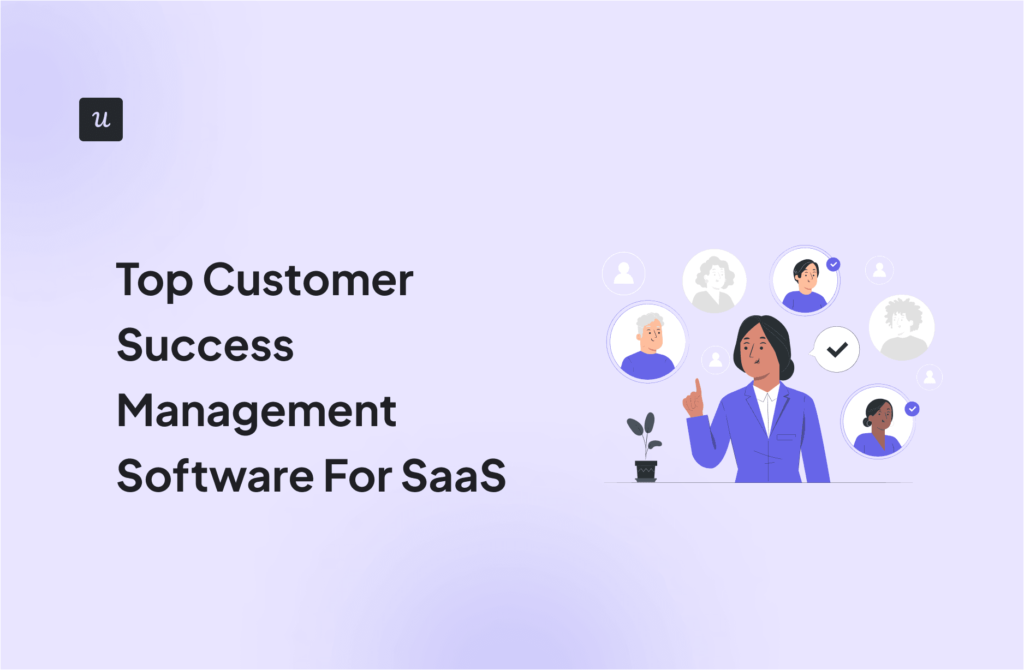![Best Strategy For Growth In SaaS [+9 Tactics To Apply It Successfully]](https://blog-static.userpilot.com/blog/wp-content/uploads/2021/09/Best-Strategy-For-Growth-In-SaaS_b163af7b3cdc694d6988213919f3ff27_2000.png)
Try Userpilot Now
See Why 1,000+ Teams Choose Userpilot

What is a growth strategy in SaaS?
A growth strategy is a plan used to achieve product expansion goals through various marketing methods. Examples of growth goals include acquiring users, increasing market share, boosting revenue, and optimizing other SaaS growth metrics.
How is SaaS growth measured?
When it comes to SaaS metrics there are none more important than pirate metrics. This framework gets its name from the AAARRR structure. Let’s take a closer look at each stage:
- Acquisition: New users may come from a lead generation funnel, paid advertising, organic traffic, or even referrals which creates a positive feedback loop.
- Activation: Delivering value to the user as soon as possible is the best way to keep the customers you’ve just acquired.
- Adoption: Getting users to explore features and adopt them into their daily habits increases the perceived product value.
- Retention: Reducing churn is essential to continue growing sustainably.
- Revenue: Growing revenue is the penultimate stage and relies on customer expansion strategies like upselling, cross-selling, or add-ons.
- Referral: The final stage is achieved when a user becomes a promoter and refers your product to their peers.
What are the four types of growth strategies?

In the quest to improve the metrics of your SaaS products, there are four common growth strategies that any company can leverage. They all come with their own unique set of pros and cons so getting a deeper understanding of these strategies can help you execute them properly.
1 – Market penetration strategy
Market penetration is the strategy that carries the least risk since you’re using your existing products/services to acquire new customers and increase your market share.
An effective market penetration strategy often includes things like product refinements, lowering prices, product positioning, and in-app messaging to drive account expansion.
2 – Product development strategy
Instead of trying to market existing products like in the first strategy, product development tries to acquire market share — whether in the same market or new markets — by creating new products or services.
This strategy makes it possible to achieve rapid business growth without lowering prices on your existing products.
3 – Market development strategy
While the first strategy mostly focuses on capitalizing on the existing market for your product, market development emphasizes expansion into new markets to drive business growth.
A market expansion strategy is high-risk but gives you the chance to grab market share for your products or services before competitors do.
That being said, market expansion often requires significant investment and there’s no guarantee of achieved growth within your target market.
4 – Diversification strategy
A diversification growth strategy is the most effective way of driving business growth through market expansion. However, it’s also the riskiest strategy.
Extensive research, development, and marketing are required to introduce new products or services to a new market.
Most successful companies need to diversify their product line if they hope to stay relevant in existing markets and enter new markets.
The best growth strategy for SaaS: Market Penetration
Most SaaS businesses are built with the goal of solving a specific pain. That being the case, a market penetration strategy while applying product-led growth marketing tactics is the most natural choice over other business growth strategies.
Constantly improving your core product until it’s the best solution for the job should be your main mechanism of capturing market share before you target a new market and explore alternative business growth strategies — such as a market development or market expansion strategy.
After all, it’s better to have one amazing product than an average product line.
If you try to create multiple products for every audience too soon instead of prioritizing product growth then you may end up diluting the value and fading into irrelevance.
Examples of growth strategies that lead to increased market penetration
Analyzing successful examples of these growth strategies can shed light on the best way to approach growth in your own business.
Let’s look at how companies like Zendesk, Airtable, Salesforce, and others have conquered their respective markets as well as the customers within.
Market penetration growth strategy #1 – Offer free trials
Free trials can work wonders for customer acquisition because they remove any financial friction that may keep leads on the fence. It may seem like wasted cash flow but, in the bigger picture of annual company sales, it can actually increase revenue.
As the end of the trial approaches, offering users a chance to subscribe at a lower price before their trial concludes could be a great way to improve your trial to paid conversion rate.
Giving users a recap of the benefits they’ve reaped during the trial period can also be highly effective:

Alternatively, you could try a freemium model for your SaaS company. It’s the same concept as running sales on consumer goods to get customers in the door of your brick-and-mortar business except on a digital scale.
Market penetration growth strategy #2 – Remove friction in your signup flow
Small companies don’t have to spend a fortune to increase their annual sales. Something as simple as reducing friction in your signup flow can increase sales without costing a dime. There are three key aspects that every frictionless signup flow should have:
- No email verification
- No paywalls/installations
- Bare minimum information to fill out
To make the most out of a frictionless signup flow, you need to make sure that the UI is compelling enough to drive users towards activation.
Airtable’s signup process takes less than a minute and their UI is personalized based on the user’s needs.

Market penetration growth strategy #3 – In-app onboarding
Whether it’s a brick-and-mortar business, online store, or SaaS – product first impressions can be lasting. After all, optimizing the onboarding process can steer the rest of the user journey in the right direction.
The best approach would be to tailor the experience to each user type through contextual onboarding.
Userpilot’s advanced segmentation uses the data gathered by welcome screens or user behavior to let you adjust in-app experiences accordingly.

Beyond segmentation, other onboarding tactics you can use include:
- Interactive walkthroughs to guide users inside your product and shorten the learning curve
- Secondary onboarding to deliver repeated value through discovery and adoption of advanced features
- Native tooltips to educate users and improve the experience
Market penetration growth strategy #4 – In-app gamification
Gamification can help you make the most out of your current customers by driving repeated usage. A good example of how to gamify your current products in the SaaS industry would be Salesforce’s badge system that rewards users:

Badges, points, and other forms of extrinsic motivation give the brain a dopamine hit that tells users to repeat the action again in the future — increasing engagement while simultaneously reducing churn.
Another example would be gamifying onboarding with a progress bar to keep users motivated. We all tend to engage more in a task when we are closer to the finish line.
Making the user experience fun can also encourage users to buy new products that you release which will expand their customer lifetime value. Ultimately, businesses need to remember that fun and productivity aren’t mutually exclusive. Rather, they usually complement each other.
Market penetration growth strategy #5 – Collect and act on feedback
Whether you’re growing small businesses or launching new products in international markets, user feedback is everything. For example, comparing satisfaction metrics before and after launching a new feature can tell you how well it was received by users.
There are four types of customer satisfaction surveys:
- Net Promoter Score (NPS)
- Customer Satisfaction Score (CSAT)
- Customer Effort Score (CES)
- Product-Market Fit (PMF)
NPS metrics are a good way of tracking customer satisfaction over time as people wouldn’t refer your product to friends if they weren’t personally getting value out of it. There are various tools you can use, including Userpilot, to create microsurveys without writing a single line of code, and collect user sentiment in-app directly:

Market penetration growth strategy #6 – Launch new features in-app
SaaS companies have a distinct advantage over retail stores in that they can reach their customers at any time through in-app messaging.
Every product adoption strategy is centered around the goal of increasing user engagement.
The more someone uses your product, the higher the odds of feature discovery and adoption. However, it’s crucial that you factor in customer preferences and utilize customer segments to keep your in-app marketing relevant to each user type otherwise it’ll come off as white noise.
Overall, avoid making your in-app messages too intrusive as this is where technology starts to become more annoying than helpful.
Welcome screens and similar modals, in particular, should be handled with care as they’re more likely to be perceived as a nuisance compared to subtle tooltips.

Market penetration growth strategy #7 – Self-service support
Statistics show that 81% of all customers attempt to take care of matters themselves before reaching out to a live representative. By implementing a self-service support model, you’ll boost the satisfaction of your customers while freeing up your team to focus on growth-centric tasks.
Building up a knowledge base with articles, videos, and other educational media may seem like a large time investment but it will pay massive dividends in the long run. Your support ticket history can often tell you which areas users are having the most problems with.
If you prefer an automated solution then you can use an in-app resource center and offer guidance and help to all your users, right where and when they need it. They just have to click the Help widget and get self-help.

Market penetration growth strategy #8 – Contextual account expansion
If you’re a small business trying to make the most out of your existing market then contextual account expansion can work wonders for your bottom line.
Insivia found that it’s 4x cheaper to upsell your current customers rather than acquiring new ones, corroborating the importance of expansion.
There are a few ways to do this.
The most obvious would be to tease premium features in an effort to upsell users towards a pricier plan, or even upgrading from a freemium account to a paid plan. To do this, offer free trials of premium features and let the user see for themselves what they are missing out on by not upgrading.

But to get the most out of in-app communication, you need to be contextual and trigger in-app messages that prompt upgrades or new trials based on the user’s in-app activity.
For example, Slack prompts users to upgrade when they are reaching their account usage limits.

Market penetration growth strategy #9 – A/B testing growth experiences
The best way to determine how your current products are performing is through A/B testing.
One of the greatest things about A/B testing is that it removes own biases out of the equation and lets data decide what drives growth.
Every A/B test has a goal in mind (aka what metric are you trying to influence in a positive way). Maybe this is to increase engagement of a specific feature.
Using a tool like Userpilot you can run experiments of in-app engagement experiences ( maybe some tooltips to point out the feature or a modal telling the user the benefits of the feature once they log in) and see which has the highest impact on your goal.

Conclusion
As you can see, effective marketing comes down to understanding where your user needs to be and crafting an experience to help them get there. If you utilize the growth strategies we’ve covered in this article then you’re sure to see product expansion and business growth across your entire organization.
Ready to apply these proven tactics to your business? Book a free Userpilot demo today to expand further than the eye can see across all markets of the business world!






